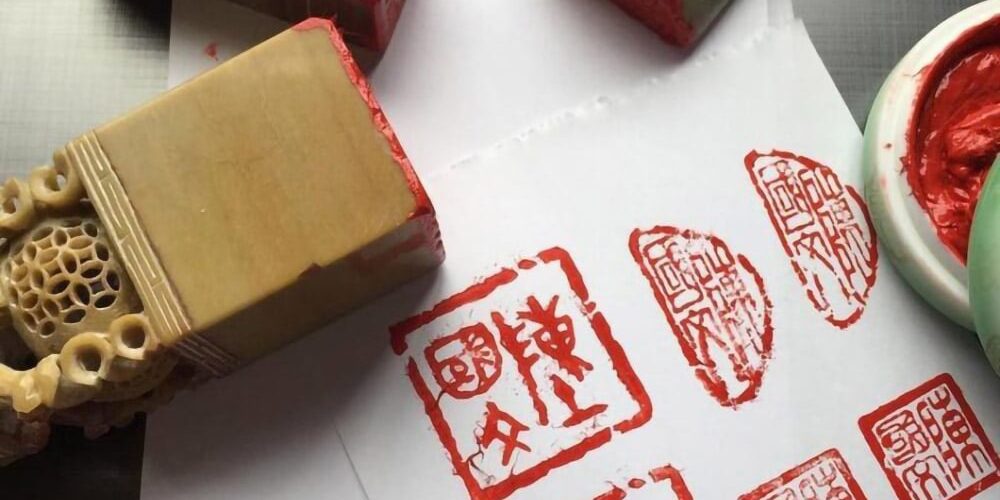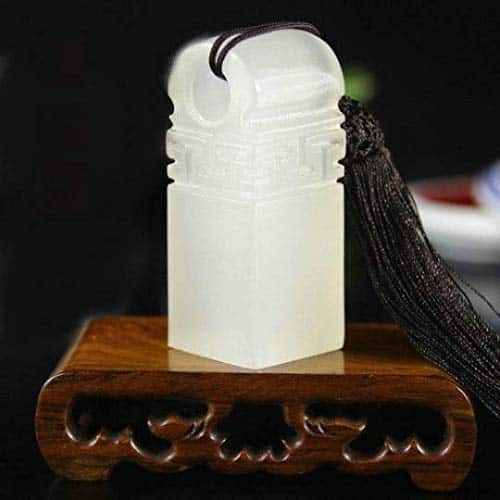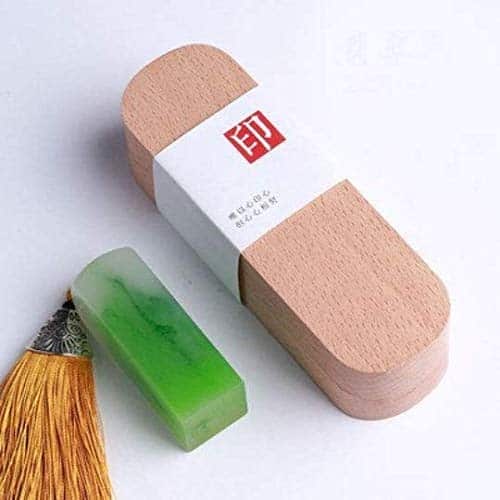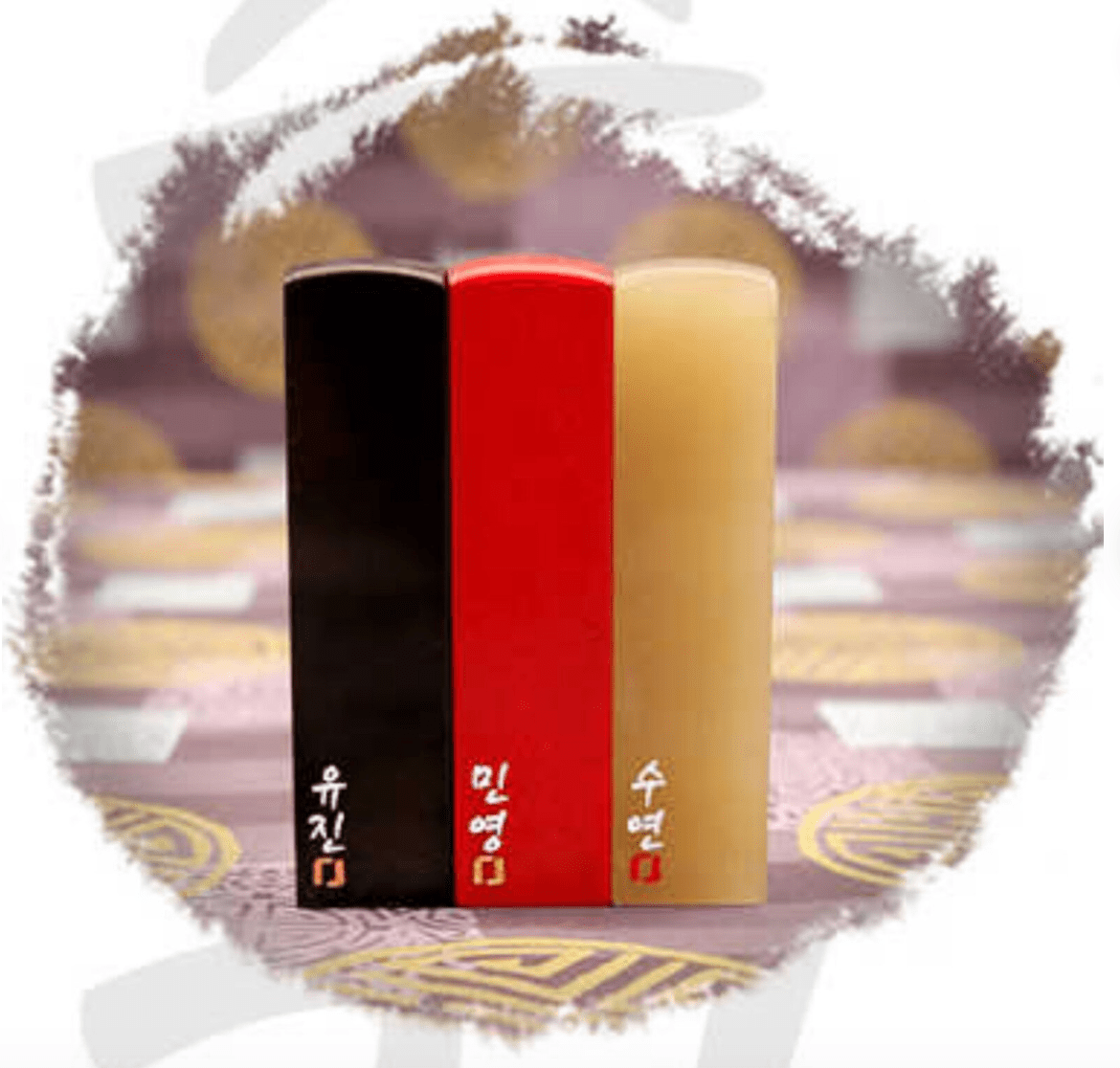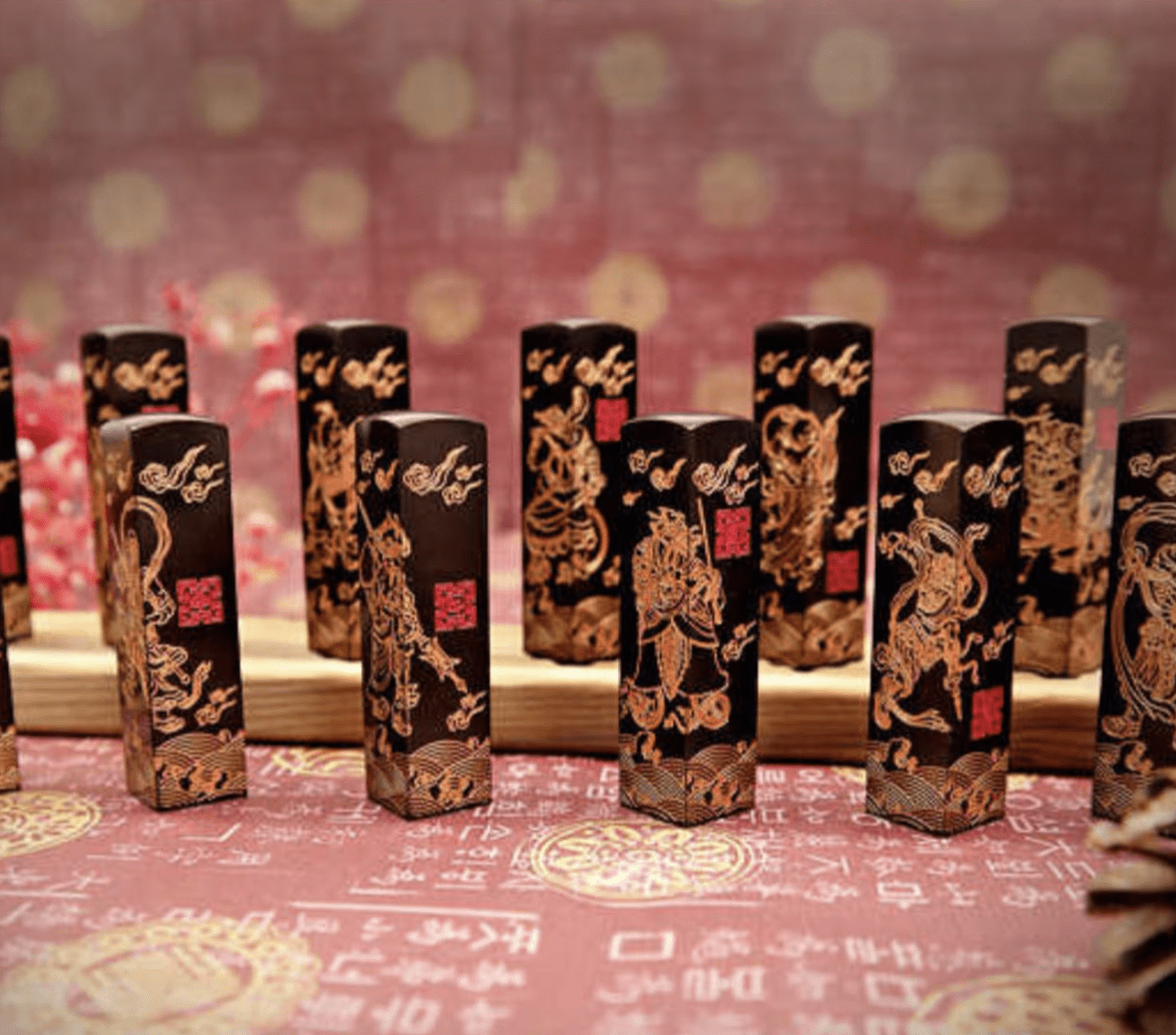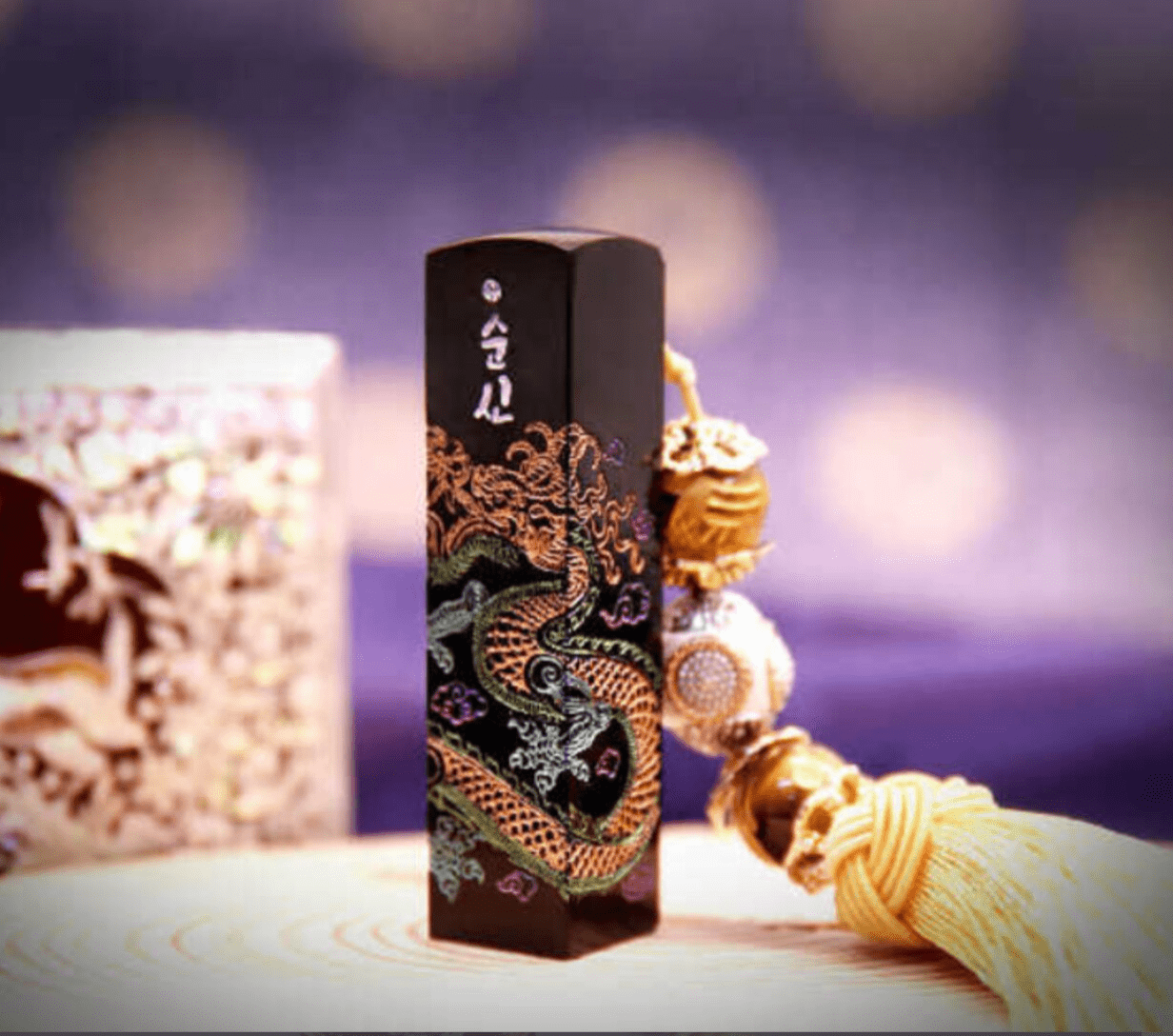What is dojang? In Korea, a dojang (도장) is a seal or stamp used to represent one’s personal name or signature. The use of dojang dates back to ancient times in Korea, and they have been an important part of Korean culture since its founding.
Just imagine that you are sitting on a departing plane at Incheon International Airport after sightseeing in Korea. Most of your souvenirs are checked. But in your pocket, your fingers touch something petite and smooth. It’s your own unique personal dojang, a talisman of your identity that is as unique as your signature.
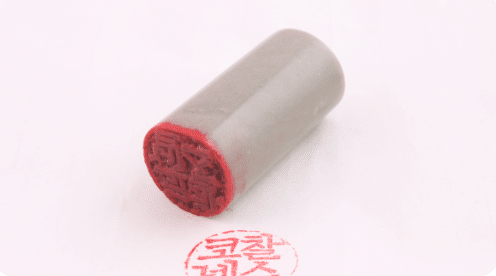
The history of the dojang can be traced back to the Three Kingdoms period (57 BC – 668 AD), where they were initially used to certify documents and other important items. During the Joseon Dynasty (1392-1910), dojangs became popular with both official agencies and individuals. Government departments used larger and more ornate dojangs while families used more simple stamps to sign personal correspondence.
Today, dojangs are still widely used in Korea, and they are considered an important symbol of personal identity and authority. Legal dojangs called ingam (인감) are registered with the government and used to sign official documents. A personal dojang is personalized with the owner’s name in Hangul (Korean script) or Hanja and can be used for various purposes including signing artwork or crafts. They can be made from a variety of materials, including ivory, wood, stone, metal and plastic.
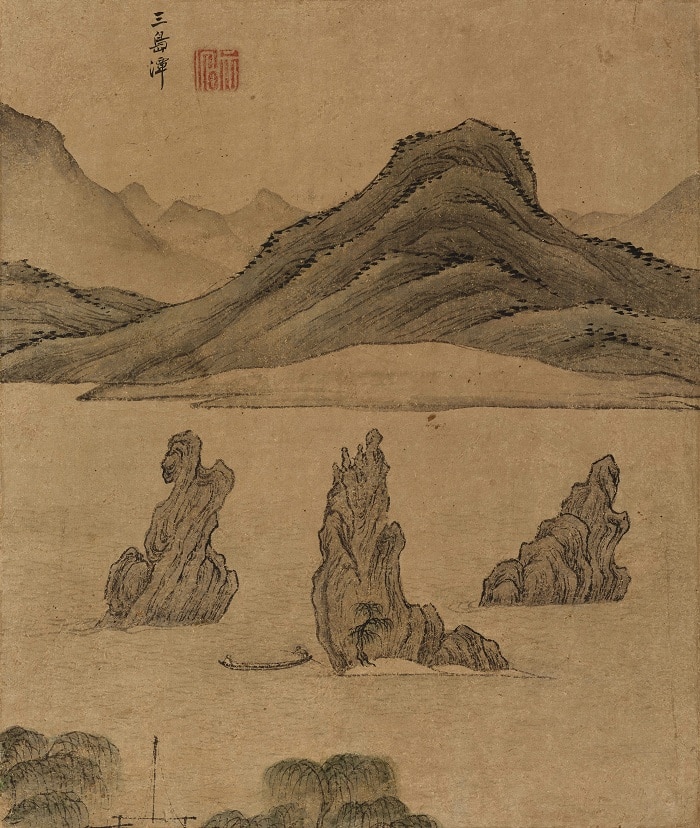
The founding of Korea linked to dojang
Owning your own dojang means you are participating in the history of ancient Korean mythology about Gojoseon (Old Korea). In that legend, Hwanung, one of the younger sons of the King of Heaven, asked to be sent down to Earth to live among the valleys and mountains. The King allowed Hwanung to descend upon the Korean peninsula and bestowed upon him three heavenly dojangs. Seeing the dojangs, people accepted the prince Hwanung as their leader.
Hwanung had a son named Dangun, whom he named King of Gojoseon in 2333 BC, the first Korean kingdom. This founding day is a national holiday in Korea called Gaecheonjeol and is celebrated every year on the third of October.
Thus the first Korean kingdom was founded thanks to a heaven-sent dojang. Since then, and to this day, all dynasties and governments on the Korean peninsula have had an official dojang called Guksae 국새. Below are the five official Guksae of modern Korea, Dae Han Min Guk 대한민국, from 1949 to the present. The current Guksae is a pure gold pair of phoenixes adorned with South Korea’s national flower, the Rose of Sharon.
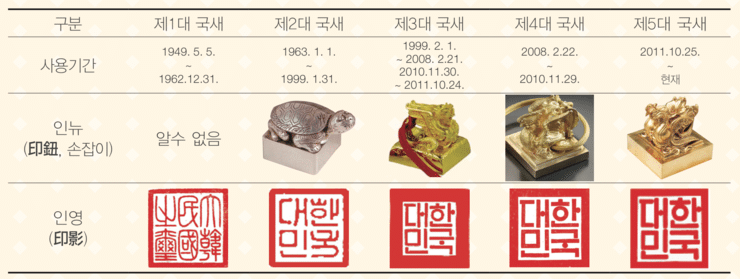
Even now the legal head of every household keeps a dojang to register as a citizen to the local governing office. Unofficial dojangs, however, can be made by anyone and do not have to be registered. Modern government officials also continue to use dojangs to seal formal transactions.
It is interesting to see the red-colored dojang signature on Korean paintings and calligraphy art to announce the artist. Why not you? You, too, can mark your identity with your own dojang on your art and letters with an official (or unofficial) seal.
How can I get my dojang?
If you’re far from the Korean peninsula, you can get dojangs online at places like Etsy and Amazon. Decide if you want your dojang engraved in Korean or Chinese characters, or even in English. Message the seller to make sure you get exactly what you want.
In Korea, there’s a concentration of dojang shops in the Insadong area of Seoul, but you can find them in specialty shops in most towns throughout Korea. The storefronts may be small and humble but don’t judge them by their outside appearance. Dare to go in and check out the merchandise.
Making a dojang is often a solitary process created by an artisan who learned the craft from a master. One shop called SangShinDang in Kangnam, Seoul, is now co-run by a lady who is a third-generation artisan. Seventy years ago her grandfather founded the shop. His son succeeded him and now the son runs with it with his daughter.
What materials are used to make a Korean dojang?
You may be surprised to know that there is an enormous variety of materials from which to make a dojang; from colorful plastics, animal bones and ivory to various kinds of wood, stone or gems, including emperor’s jade.
Korean people especially love jujube wood that was hit by lightning. They believe this kind of wood protects them from bad luck and brings blessings. This particular wood does not float on water but rather sinks to the bottom like a stone. Often the scar from the lightning strike can be seen on the wood. Some people have it made as jewelry to wear around their necks.
As for shape of the dojang, you can choose whatever you like: round, oval, square or rectangular, etc. You can also have them sculpt the body of the dojang into a unique shape. The same goes for the engraving on the dojang face: Korean or Chinese characters, English or even some kind of art or symbol. How about your own face? Yes, they can do that, too.
The price?
If you want one that’s simple or modest one, it can range from $20 to $50. But if you’re looking for something unique and/or high quality, dojangs can run from $50 to hundreds of dollars or more. When your dojang is made in Korea, you’re likely getting something that is the product of a highly skilled artisan who is carrying on a cherished tradition.

